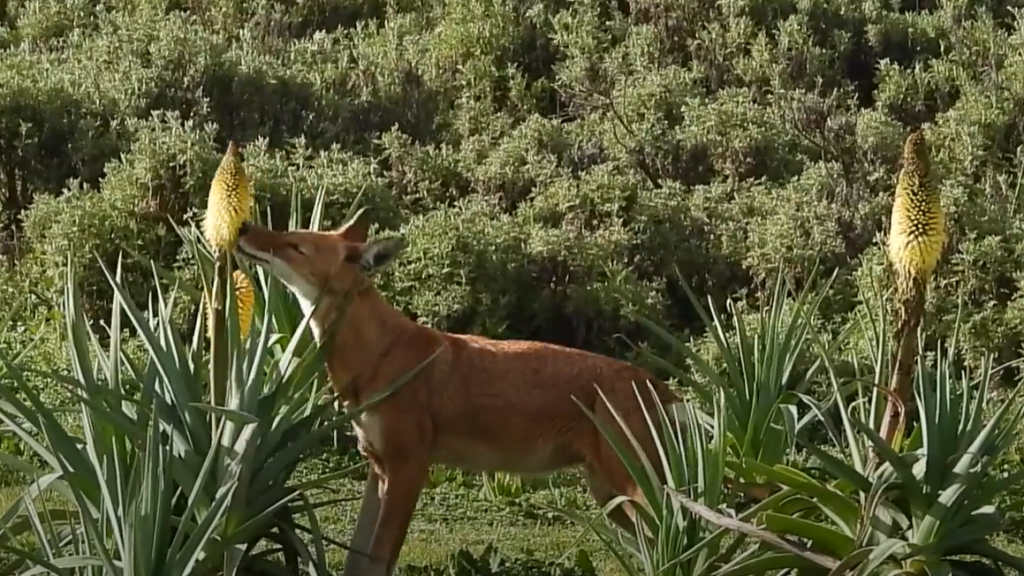In an unexpected twist of ecological behavior, the Ethiopian wolf has been documented feeding on nectar.
Others are reading now
The Ethiopian wolf has surprised researchers with its newfound role in pollination.
A recent study published in Ecology documents how this endangered predator forages for nectar from the Ethiopian red hot poker flower (Kniphofia foliosa), blending its carnivorous instincts with a surprising taste for sweetness.
The Ethiopian wolf, the rarest wild canid species on the planet, is native to Ethiopia’s Afroalpine highlands.
From Mole-Rats to Red Hot Pokers
Typically, Ethiopian wolves sustain themselves by hunting mole-rats, other rodents, hares, and occasionally bird eggs or goslings, according to SciNews.
Also read
Now, researchers have discovered individuals visiting as many as 30 blooms in a single trip, slurping nectar from the fiery red flowers.
The wolves’ interaction with Kniphofia foliosa may aid in the pollination of this plant, a native of Ethiopia’s Bale Mountains.
“Flowers from the Kniphofia genus produce large amounts of nectar, which attract a variety of bird and insect pollinators,” explained the study’s authors.
Now, wolves appear to have joined the pollinator roster, with their pollen-coated muzzles offering an unorthodox means of transferring pollen between blooms.
A Rare Behavior Among Carnivores
This remarkable behavior, researchers say, marks the first known instance of a large predator engaging in plant-pollinator interactions.
“I first became aware of the nectar of the Ethiopian red hot poker when I saw children of shepherds in the Bale Mountains licking the flowers,” said Professor Claudio Sillero of the University of Oxford, founder of the Ethiopian Wolf Conservation Programme.
“In no time, I had a taste of it myself — the nectar was pleasantly sweet. When I later saw the wolves doing the same, I knew they were enjoying themselves, tapping into this unusual source of energy,” he added.
This unique feeding habit isn’t just a curiosity; it reflects the adaptability of Ethiopian wolves in their harsh, high-altitude habitat.
According to Dr. Sandra Lai, co-author of the study, “It also demonstrates the complexity of interactions between different species living on the beautiful Roof of Africa.”
Teaching the Next Generation
The researchers also observed social learning among the wolves.
Juveniles were seen accompanying adults to the flower fields, likely learning how to exploit this unexpected food source. This behavior suggests a cultural transmission of foraging techniques within packs, further underscoring the wolves’ ecological flexibility.
Fewer than 500 Ethiopian wolves remain, confined to six isolated Afroalpine enclaves in Ethiopia’s highlands. Their shrinking population faces threats from habitat loss, fragmentation, and diseases transmitted by domestic dogs.
“These findings highlight just how much we still have to learn about one of the world’s most-threatened carnivores,” Dr. Lai emphasized.
She noted that understanding such interactions is crucial to preserving not just the Ethiopian wolf, but the delicate and biodiverse ecosystem they call home.








